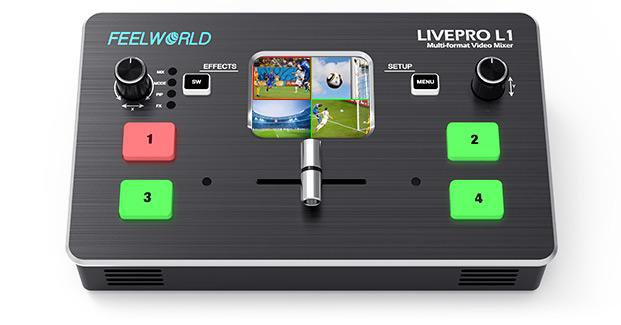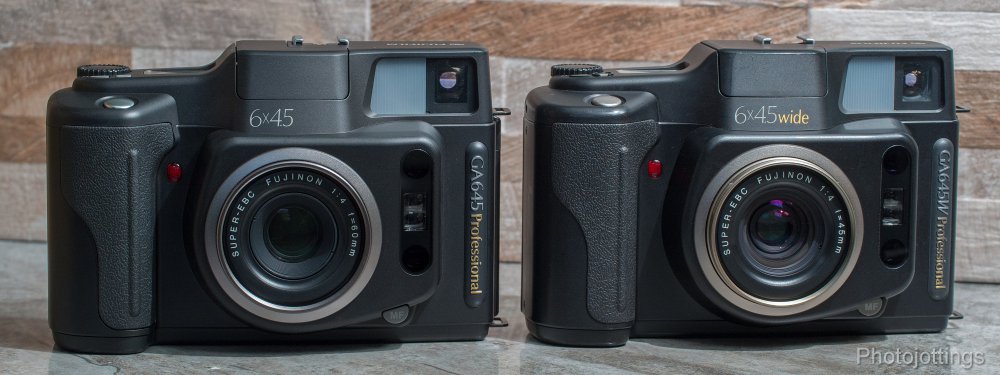-
Posts
5,964 -
Joined
-
Last visited
Content Type
Profiles
Forums
Articles
Everything posted by BTM_Pix
-
and another
-
dupe
-
Well if you are going to bring facts in to it 😉 I thought the Swissbit ones could do it but looking at it again they do need an additional layer. You can run scripts on the card so its flexible and customisable but also pretty easy to setup. It can FTP on its own directly so the phone storage can be bypassed depending on needs. You basically setup the phone as a tethering hotspot (or use a separate portable cellular router) and the FlashAir connects to it and just uses its connection to get out to the FTP server. I've used them when shooting live editorial to FTP images to my laptop for editing during matches but also to directly upload them to the agency server when someone has been remote editing for me. They worked as seamlessly and reliably as using my (ridiculously expensive at the time) WT4 and WT5 transmitters and they were also far less cryptic to set up. I was only doing stills with them though, so video files are going to need a whole different kettle of fish bandwidth wise. When 5G becomes standard then that will be less of an issue although, ironically, there are currently a number of hostile reporting situations when covering protests in the UK at least where 5G itself forms part of the narrative of the protest !
-
Without power, the adapter will not be able to communicate with the camera so you should only need to isolate the power and ground to stop it working. This means that you should be able to bring those out those externally and power the adapter from an external source that you would then be able to engage and disengage with a switch as required. Something like this module which allows you to use a rechargeable 16340 battery could be used and they are about €4 on Aliexpress and the batteries are around €2 for 2 or €6 for 10. It probably won't be pretty and you'll need to find a Fuji service manual to find out the pins but it will work for what you need and is definitely low budget.
-
There are a few manufacturers of encrypted SD cards, so that would take the onus off the camera to do it but you'd have to do some investigation on the speed implications as they are generally made for things like automotive applications rather than the higher demands of writing 4K 10 bit video files etc. At the risk of pimping the Toshiba FlashAir SD cards yet again...... These cards do provide a solution in that they can automatically offload files in the background to your phone while you are shooting which then means that you have files that are as secure as your phone is from being accessed, providing you are writing them internally, but then you can use an app to encrypt them if you offload them to the micro SD card. It can also automatically be FTPing them to a cloud server as an additional backup which circumvents the problem of your physical media being seized whilst its in the camera or on your person. Having secure physical storage is one thing as it means no one can view your footage but if it is taken off you then neither can you.
-
The problem with the ATEM Mini Pro is that you'll look at the ATEM Mini Pro ISO and think "yeah, I might as well go all in and get that one" 😉 The ATEM Mini Pro ISO is an incredibly versatile and capable piece of gear and if you were going in to this do different types of jobs as well, like shooting live music shows for example where you are providing a live stream and also want to post edit it, then it is perfect, particularly if you are using BM Pocket cameras. If you are just doing this straightforward live football thing then its not exactly overkill, particularly if you are tasked with producing an edited version with replays from different angles etc, but the "four buttons and a screen" aspect of the Feelworld has some big advantages usability and simplicity wise. In that instance, the extra budget might be better off being diverted the upload side of things or remote cameras etc. Or just save yourself the agonising and buy both !
-
Feelworld have announced an interesting alternative to the ATEM Mini. https://feelworld.ltd/products/feelworld-livepro-l1-multi-format-video-mixer-switcher-4-x-hdmi-inputs-real-time-live-streaming?gclid=EAIaIQobChMIusbQwLeJ7AIVUBHgCh2oNwhUEAEYASAAEgIrMvD_BwE Its the same $299 price as the ATEM Mini but its slightly smaller and has an integral screen. That makes it a lot more self contained (as the ATEM Mini needs a screen) so opens up the possibility of mounting it to the side of the tripod of the main camera (on an iPad type tray for example) and switching multi cameras yourself while operating the master one. A lot less buttons than the ATEM but that simplicity will be a boon for operating in that environment, particularly as the sources are separated and laid out as per the quadrants of the screen. Another advantage it has over the base level ATEM Mini is that if you do attach an external screen then it also has multi-view monitoring.
-
I suppose the upside of not being able to have fans in the stadium at the moment is that the cellular bandwidth doesn't get eaten up !
-
There are a lot of variables with this mate ! The first of which, of course, is budget. The second which, may or may not be related to the above completely although of course they will impact on each other, is how many cameras you want to use. The third would be how many of them are going to be live operated. The fourth would be the network capability of the venue, both in terms of is it wired as well as the speed and if it will be for the exclusive use of you broadcasting. So if it is just a single camera on the halfway line then you will only need a way of encoding and getting the stream out, which could be done with one of the low price HDMI encoders with wifi and/or singular cellular option or a more sophisticated, not to mention expensive, one with cellular bonding. The upload speed you will need for 1080 live streaming is around 5 Megabits per second so isn't particularly onerous for a fixed installation but if the club also use that connection for other purposes such as providing internet access for staff, press or fans then you'll be sharing that with them. With cellular its exactly the same if not worse as a lot of fans will be as glued to their smartphones these days as they are to the action in front of them sadly. If you can guarantee a network connection (ideally wired but wifi if not) and are only using one camera then the price of entry for you to do it will be an HDMI cable and about €150-170 on Aliexpres for an NPF powered on camera encoder like this one. The version with a single 4G sim will be around €350. If you want multi-cellular bonded connections then you are looking at products from Teradek or the LiveU Solo which will be over the €1K mark and also require fees for cloud services that reconstruct the different data streams into one for broadcasting with. In terms of scaling up, the encoder/transmitter aspect won't change but obviously you'll need to have a budget per camera channel both in terms of the cameras themselves, the switcher capacity and the control and connection costs. That last part will form another big part of the equation because the cable runs and infrastructure required to have multiple cameras around a football pitch can become a headache and might actually end up determining what sort of cameras and switcher you have to buy. As will whether you are just having to provide a basic video stream or are being asked to do a full production with scoreboard, action replays etc. Definitely a how long is a piece of string question this one.
-
This is an example starting point of a ticketing service provider. https://www.ticketspice.com/ticketing-for-livestream-events/ I've never used them, or any other provider of a similar service but it will at least give you an idea of what is involved and an outline of pricing. Obviously, shop around.
-
For anyone wanting a bit more tactile control of the clear image zoom on Sony cameras, this Fotga RM-VS1 will give you a zoom rocker to operate it with as well as a shutter release, record button and power on/off. If you are using a lens with servo zoom such as the PZ18-105mm f4 etc then it controls both the optical zoom and the clear image zoom as one (kind of continuous) lens. I say kind of because there is a slight pause when zooming in when it gets to the crossover point at the end of the optical range. If you've got an RX100 then it also controls the optical and clear zoom extension in the same way. There is no variable speed so don't expect to be doing variable speed zooms but its good for framing if nothing else. Expect to pay around €16-18 on Ali or €20-25 on Amazon.
-
Some demo footage of the Quad Lock functionality will be forthcoming later next week, likely Friday.
-
Yes, it can be implemented but we tend to avoid anything that will make a destructive difference to the recording format. If BM had something on the camera screen that indicated it was in window mode then it would be safer and I suspect that it is why its not available to be mapped to one of their function keys even though it is a very useful tool to have. It is slightly different with the PBC because it would be a very deliberate process to go into setup and assign it (and it could be mapped to a long press so its more difficult to trigger accidentally) so it might be possible to consider it for the benefit of consenting adults in a future update.
-
Ah thats OK because, to use the current favoured terminology of our glorious leaders, they were only bullshitting in a 'very limited and specific way' then.
-
The same nonsense is being repeated by other sites as well. How can the 124 x 71 x 60 mm dimensions of the Sony a7C make it smaller than the 112.6 x 69.9 x 45.3 mm dimensions of the Sigma fp. At best its just absolute laziness but really shows again how rife the plagiarism and unchecked content aggregation really is.
-
Yeah, the problem with equivalence tests is finding or having the equivalent lenses to not prejudice the FF camera. Having to have the FF at f4 because the APS-C had to be at f2.8 and the MFT with the SB could be f2 is not doing the FF any favours. Matching the focal lengths also make it a challenge without using a zoom as well of course as at least they maintain the same contrast and colour for each camera. I'm trying to think about which set of cameras and primes that could be used for be a totally accurate test if someone wanted to do it properly and its a tricky ask to get exact matches.
-
This is a very interesting side by side between the S1 and S1H specifically looking at the OLPF aspect. It does beg the question whether the OLPF from the S1H might be available as a spare part from a Panasonic service agent as that would appear to be the path of least resistance to have the same capability on the S1. Apart from taking them to pieces to fit them of course 😉 Here is a teardown of an S1R to give you an idea of what that entails but if you can find a camera repair service that are able to source the parts from Panasonic then they would obviously be able to oblige on that front too. https://kolarivision.com/the-panasonic-s1r-disassembly-and-teardown/
-
FWIW, I did a very quick basic comparison between MFT, APS-C and FF at a couple of focal lengths a few years ago on here and the differences in those specific limited instances with zoom lenses to create the correct equivalent focal lengths were marginal. A more thorough test at different distances using primes would possibly yield more telling differences but I got bored. Close enough for jazz as we would say.
-
Good news. Control of the audio levels for both channels has now been incorporated and will be in the PBC firmware update that will be released to support the AFX (though its not dependent on buying an AFX !).
-
Well they do have a lot of form from the film days when they made quite a range of different medium format P&S cameras. If they based it on the GFX50R then they could probably bring it in with a fixed lens for under the price of the Leica Q2 but, yeah, it would need to go on a serious diet.
-
The trailer for part 2 is now up.
-

Canon EOS R5 / R6 overheating timers, workarounds, and Magic Lantern
BTM_Pix replied to Andrew Reid's topic in Cameras
-

Canon EOS R5 / R6 overheating timers, workarounds, and Magic Lantern
BTM_Pix replied to Andrew Reid's topic in Cameras
Hence the inverted commas. Considering the absolute dragging that independent voices had and continue to have after raising this issue, why would they ever want to raise their head above the parapet again ? When that proved how so many people there are that value the currency of happy feels, idolising and faux-friendship above objective reality then the only words being said with those independent voices from now on are likely to be "Alright, get the products you deserve then". -

Canon EOS R5 / R6 overheating timers, workarounds, and Magic Lantern
BTM_Pix replied to Andrew Reid's topic in Cameras
Canon lost a lot of trust with the initial song and dance though @Emanuel Based on that, if you owned an R5 and had a workaround that you were comfortable with - which Canon clearly don't want you to have otherwise they'd have never included this nonsense in the first place - would you trust them that they hadn't included something to shut the door on it ? Let the "reviewers" who were so keen to say it didn't have a problem in the first place do extensive testing on their R5s and show the results, as its fair to say they certainly owe one to anyone who bought these cameras based on their initial "reviews". Or, more radically, how about Canon do a livestream of their own testing to put this to bed once and for all about what they stand behind with regard to this camera's performance. If you can do livestreams to announce and push your product specifications then you should certainly be able to do them to qualify them too. If it turns out they are just being conservative to extend the life of the product - which is a perfectly valid stance in my opinion - then fine just demonstrate and explain that properly.













